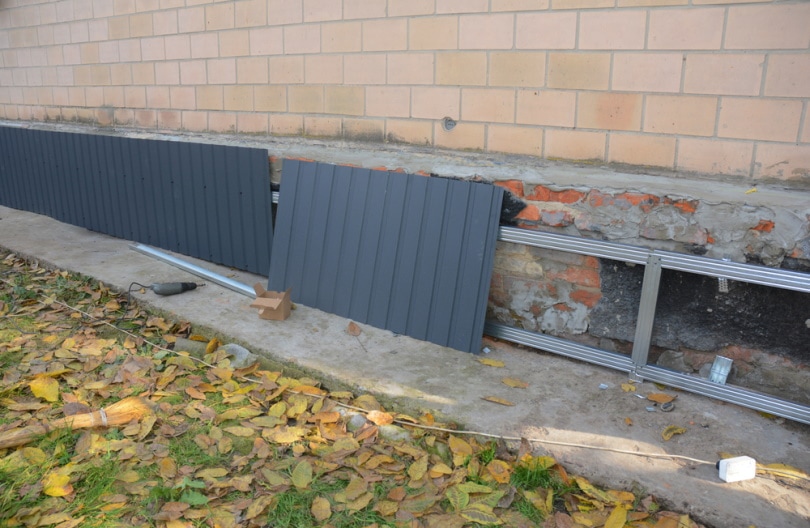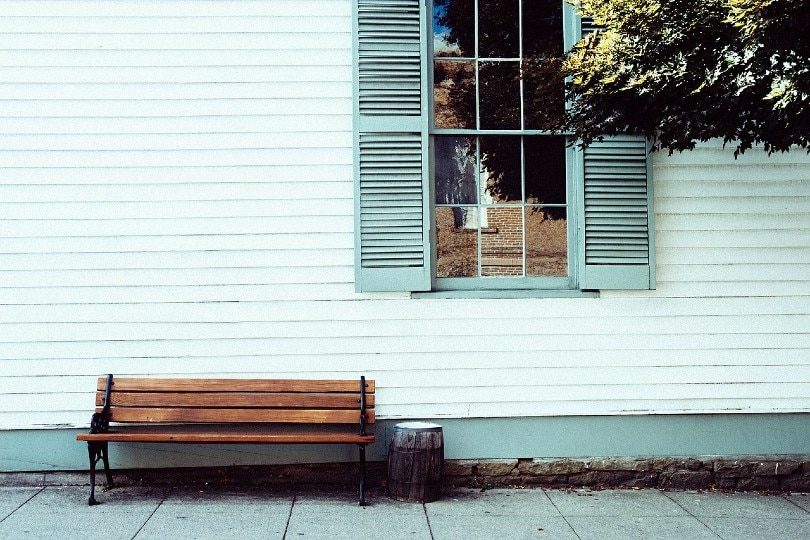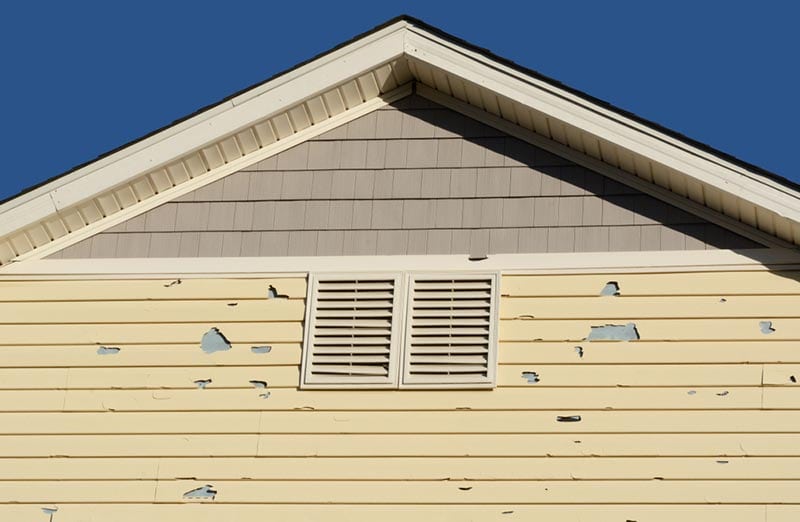What Is the Best Time of Year for Siding Replacement? Factors & Seasons
-
Jeff Weishaupt
- Last updated:

Professionals suggest that you replace your home’s siding every 10–15 years, but it isn’t as simple as replacing it whenever you get the chance. In addition, certain times of the year aren’t fit for new siding installments, which is why you should choose the perfect season for a siding replacement.
According to research, fall is the best season to replace your home’s siding for various reasons. While the season’s discounted prices and moderate weather are the main reasons for this fact, there’s more to learn about why you should replace your siding during fall.
When to Get a Siding Replacement
You may think there’s no problem getting a siding replacement any time of the year, but certain weather conditions can make this a wrong decision. Here’s everything to know about the best time to get a siding replacement:
Fall
The moderate and slightly chilly weather of fall makes it the ideal season to install a siding replacement without any hassle. Fall weather has the perfect balance of warm and cold to prevent damage to the siding material, as vinyl siding doesn’t react well under heat.
Aside from weather conditions, the season has endless other benefits regarding siding replacement. First, you’ll find that contractors are much more readily available during the fall. This allows you to have them entirely focused on your project at once.
You can also get your hands on heavily discounted materials and benefit from sales this season. For example, most building sites state that siding materials are available for discounted prices in the wall as the new winter inventory is about to replace them.
Materials aren’t the only things you can score discounts on in the fall. Since siding companies have fewer clients during colder seasons, you may be able to score a lower siding cost quote for installation in the fall. Most contractors may also be willing to offer discounts to make up for slow business.
Another benefit of replacing your home’s siding during the fall is that it allows you to prepare for the winter by insulating the building and protecting it from freezing temperatures. In addition, siding replacements eliminate water damage. This means they inevitably improve your home’s insulation system and make it more robust for oncoming snowy days.

Winter
Vinyl siding doesn’t react well under extreme weather conditions, whether it’s too hot or too cold. Most professionals warn against the dangers of replacing siding in the summer. But you should also learn why winter isn’t a great time to install new siding.
When the temperature is below freezing, your siding will likely contract in the cold weather and fail to perform well at the right time. Besides overall performance, contraction can also skew the overall measurements for the coverage of your home and make it difficult to secure the panels in place.
It’s also worth noting that the season’s cold air weakens the material, making it brittle and fragile. As a result, the vinyl siding can crack or break apart when you attempt nailing to the wall. What’s worse is that most contractors don’t cover such damages in their quotes, so you’ll need to pay for it out of pocket.
Spring
Spring isn’t too bad of a season to replace your home’s siding, but it still has some hindrances. For example, it may rain unexpectedly, ruining the entire siding replacement project. If your contractor has already begun the work for the day and has to cancel due to unexpected weather conditions, they could likely charge you more for working the next day.
Your home’s sheathing and walls are exposed during the process of replacing the siding. During this time, if rainwater gets in the wrong spots, it can lead to mold and fungus, defeating the entire purpose of a replacement. In the worst-case scenario, you may end up dealing with harmful mold infestations that negatively affect your health.
However, if you can guarantee that there will be no rain when you replace your siding, spring is generally pleasant enough weather for this project.

Summer
As we mentioned, vinyl siding does not react well under heat, which is why summer isn’t a good time for your siding replacement project. Since sliding vinyl is made from plastic, sweltering conditions can cause it to melt and hinder the installation process.
If you’re lucky enough to prevent the vinyl from melting, the material will still stretch and expand during installation. In the worst-case scenario, the panels can end up 5/8 of an inch longer than their original size.
As a result, the contractors may unknowingly nail it too tightly. When colder seasons arrive, the vinyl siding mostly contracts and inevitably cracks.
Not only does heat cause immediate damage to the vinyl, but long-term sun exposure can also cause the material to deteriorate. Finding a contractor who knows how to mitigate the challenges of siding installation in high heat is generally tricky.
Why You Need a Siding Replacement
Now that we know it’s best to get a siding replacement every 10–15 years in the fall, let’s learn a few signs indicating a clear need to replace your home’s siding.
Storm Damage
Rainwater is one of the main things that may damage your home’s siding. Of course, there won’t be any notable damage within the first few years, but by the end of a decade, you may see how rainy or stormy days affect the siding.
Besides, storms can also cause holes in the vinyl siding and dents in the aluminum sliding. Not only does this weaken your home’s insulation and protection against mold, but it also allows a strong gust of wind to rip entire panels of siding off your home.
If you notice such signs of rainwater damage, it’s time to replace your home’s siding to protect the exterior and interior. It is also wise to check your home insurance policy for siding replacement coverage.

Peeling Paint
If you have wood siding installed, there’s a myriad of issues that can lead to excessive peeling paint. That could be poor ventilation behind the siding, the wrong choice of paint, long-term moisture penetration, or other factors. Regardless, peeling paint isn’t just detrimental to your home’s exterior aesthetics, but it also leaves room for mold infestations.
If you find your siding paint job flaking off, this is the perfect time to replace the siding and opt for a more durable, low-maintenance option.
Fungal Decay
As we mentioned, water damage in your home’s siding can lead to mold infestations and even fungal decay. Certain fungi eat away at your wood siding, compromising not just the aesthetics but also the strength and stability of your home.
Fungal decay can also attract termites, so it’s best to replace your decaying siding as soon as possible. Unfortunately, by the time you realize you have a termite infestation, it may be too late to fix the damage.

Missing Pieces
Missing pieces in your siding structure is a serious issue that most homeowners often overlook. It may seem like a repair you can put off for next year. But missing siding pieces can leave your home vulnerable to termites, rot, and premature siding failure.
It’s best to find every way to prevent these issues, as fixing them will cost you much more than a simple siding replacement. If you note pieces in your siding are torn, blown off, or falling off, you should replace your home’s siding immediately.
Conclusion
If your siding is older than 10 years, it is the ideal time to invest in a siding replacement. However, it’s essential to choose the perfect time of year for siding replacement: the fall.
It prevents expanding or contracting of the panels during the installation process. Plus, you can count on generous discounts from contractors and sliding material suppliers during this season due to slow business.
Featured Image Credit: Radovan1, Shutterstock
Contents

